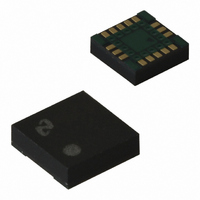LMX2335USLBX National Semiconductor, LMX2335USLBX Datasheet - Page 31

LMX2335USLBX
Manufacturer Part Number
LMX2335USLBX
Description
IC FREQ SYNTH DUAL 16LAMINATECSP
Manufacturer
National Semiconductor
Series
PLLatinum™r
Type
PLL Frequency Synthesizerr
Datasheet
1.LMX2335UTMNOPB.pdf
(48 pages)
Specifications of LMX2335USLBX
Pll
Yes with Bypass
Input
CMOS, TTL
Output
CMOS
Number Of Circuits
1
Ratio - Input:output
3:1
Differential - Input:output
No/No
Frequency - Max
1.2GHz
Divider/multiplier
Yes/No
Voltage - Supply
2.7 V ~ 5.5 V
Operating Temperature
-40°C ~ 85°C
Mounting Type
Surface Mount
Package / Case
16-Laminate CSP
Frequency-max
1.2GHz
Lead Free Status / RoHS Status
Contains lead / RoHS non-compliant
Other names
LMX2335USLBXTR
Test Setups
The block diagram above illustrates the setup required to
measure the LMX2336U device’s RF1 input impedance. The
RF2 input impedance and reference oscillator impedance
setups are very much similar. The same setup is used for a
LMX2336TMEB Evaluation Board. Measuring the device’s
input impedance facilitates the design of appropriate match-
ing networks to match the PLL to the VCO, or in more critical
situations, to the characteristic impedance of the printed
circuit board (PCB) trace, to prevent undesired transmission
line effects.
Before the actual measurements are taken, the Network
Analyzer needs to be calibrated, i.e. the error coefficients
need to be calculated. Therefore, three standards will be
used to calculate these coefficients: an open, short and a
matched load. A 1-port calibration is implemented here.
To calculate the coefficients, the PLL chip is first removed
from the PCB. The Network Analyzer port is then connected
to the RF1 OUT connector of the evaluation board and the
desired operating frequency is set. The typical frequency
range selected for the LMX2336U device’s RF1 synthesizer
is from 100 MHz to 2000 MHz. The standards will be located
down the length of the RF1 OUT transmission line. The
transmission line adds electrical length and acts as an offset
from the reference plane of the Network Analyzer; therefore,
it must be included in the calibration. Although not shown, 0
Ω resistors are used to complete the RF1 OUT transmission
line (trace).
(Continued)
LMX2335U and LMX2336U f
31
IN
To implement an open standard, the end of the RF1 OUT
trace is simply left open. To implement a short standard, a 0
Ω resistor is placed at the end of the RF1 OUT transmission
line. Last of all, to implement a matched load standard, two
100 Ω resistors in parallel are placed at the end of the RF1
OUT transmission line. The Network Analyzer calculates the
calibration coefficients based on the measured S
eters. With this all done, calibration is now complete.
The PLL chip is then placed on the PCB. A power supply is
connected to V
5.5V. The OSC
the OSC
mentary input (f
Network Analyzer still connected to RF1 OUT, the measured
f
Note: The impedance of the reference oscillator is measured
when the oscillator buffer is powered up (PWDN RF1 Bit = 0
or PWDN RF2 Bit = 0), and when the oscillator buffer is
powered down (PWDN RF1 Bit = 1 and PWDN RF2 Bit = 1).
The LMX2335U f
lar to the above test setup. Note that there are no comple-
mentary inputs in the LMX2335U device.
Impedance Test Setup
IN
RF1 impedance is displayed.
in
pin can be tied to V
CC
in
IN
pin is tied to the ground plane. Alternatively,
IN
and the bias voltage is swept from 2.7V to
RF1) is AC coupled to ground. With the
impedance test setup is very much simi-
CC
. In this setup, the comple-
www.national.com
10136779
11
param-











